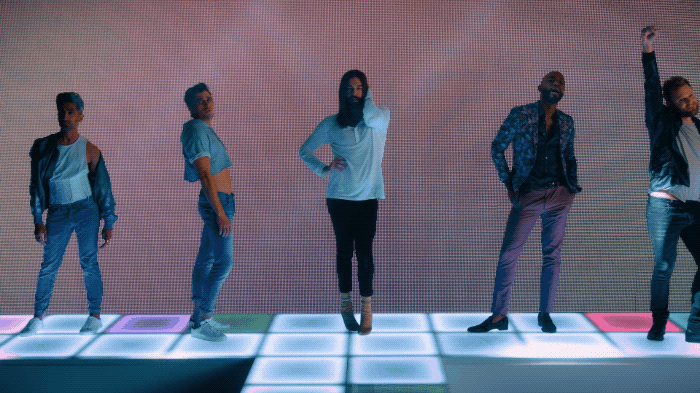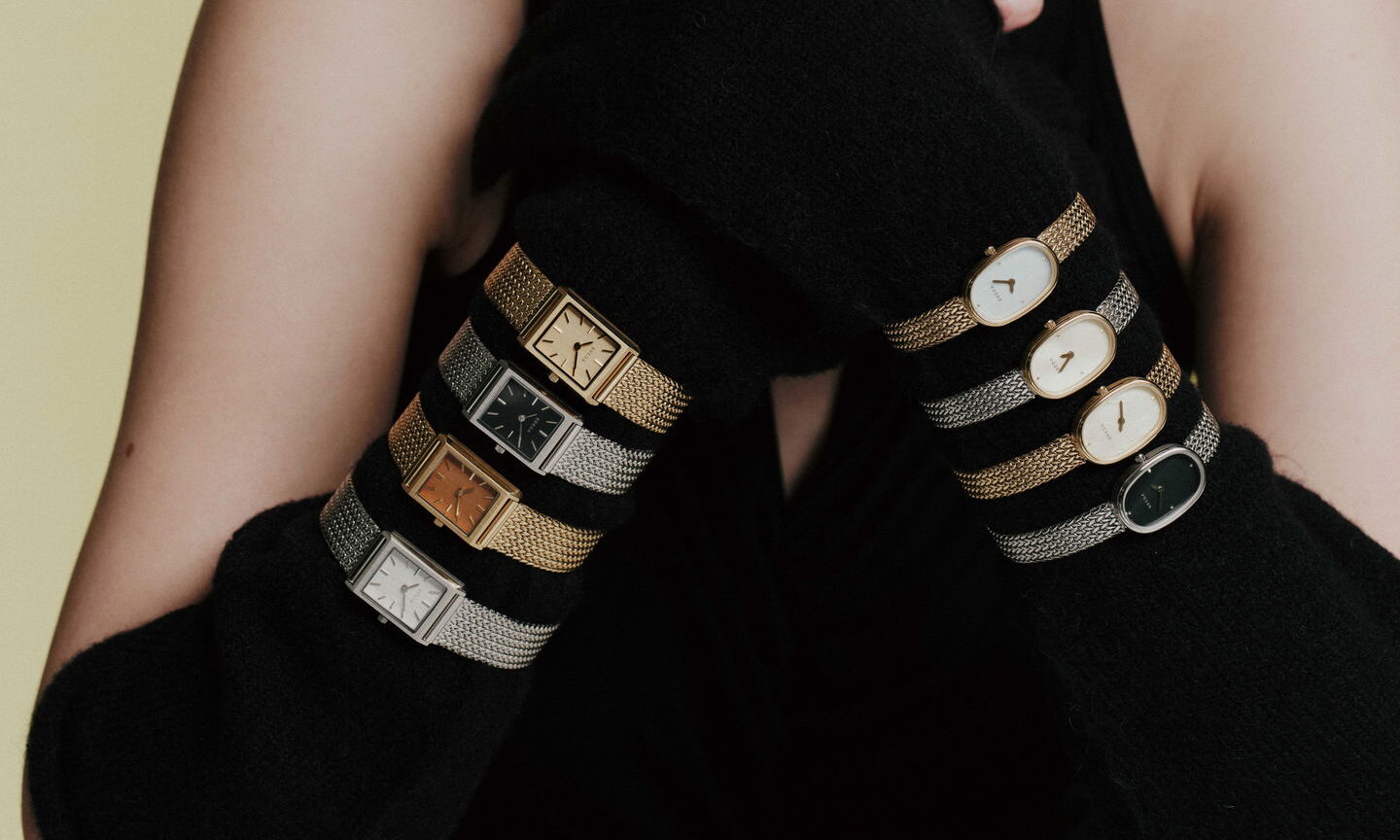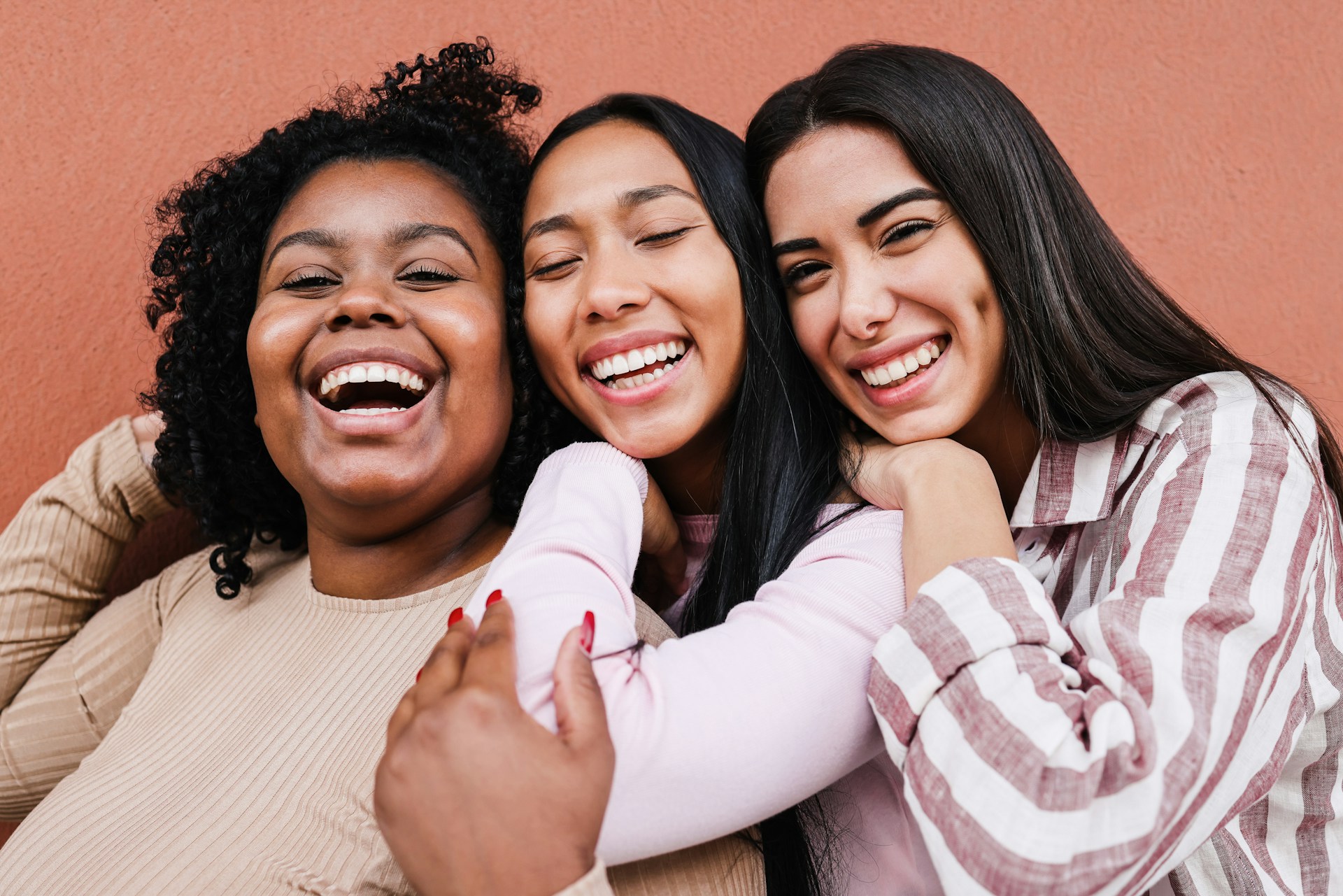Queer Eye is a difficult show to criticize.
This is mostly thanks to its stars, Antoni, Jonathan, Bobby, Karamo, and Tan, each of whom radiate a well-balanced combination of kindness and charisma that makes you want to protect them at all costs. So, Fab Five, if you’re reading this: It’s not you—it’s capitalism.
To be clear, the word capitalism (in this article) doesn’t refer to good old-fashioned free market competition. It refers to the mutation that is neoliberal capitalism; which promotes unchecked, limitless accumulation; which revolves around massive, resource-sucking corporations; and which thrives off unsustainable income inequality.
Also known as late capitalism, this phrase “describes the hypocrisy and absurdities of capitalism as it digs its own grave,” according to the economist Kimberly Amadeo. In spite of all its sweetness and positivity, Queer Eye is built on the foundation of neoliberal capitalism.

Money Fixes Everything
Queer Eye’s entire concept is predicated on the idea that each of the “fixer-uppers” featured in each episode is desperately in need of remedying. And almost always, even though their actions and conversations may seem to imply otherwise, money is the answer.
While Karamo’s life-coach role is the least firmly rooted in capitalist values, as he’s more focused on internal worlds, each of the other Fab Five’s tasks promote the message that redemption and happiness can be achieved with cash, and cash alone. Jonathan Van Ness and Tan France focus on exterior appearances, through hair, grooming, and clothing—all of which, needless to say, require money, and promote capitalist idealization of style and beauty.
Similarly, Bobby’s exquisite renovations are probably the most expensive projects on the show. His extraordinary work, though satisfying during the big reveal, promotes illusory expectations as to how a home ought to look and how quickly renovations can happen. A renovation like Bobby’s would be immensely complex and stressful for any ordinary working person, especially someone trying to DIY it.
Antoni’s recipes, to his credit, are a bit less innocuous. Often, they’re accessible projects for the ordinary working person who’s not inclined to culinary endeavors. Interestingly, his methods have also faced the most media scrutiny of all, with professional chefs and the Internet alike criticizing him for the “simplicity” of his recipes.
This dislike for Antoni’s recipes reveals that not only do viewers buy into Queer Eye‘s capitalist values. They watch because of them—because of the shiny, glitzy, quick-fix rush. This is because these values align neatly with what we’ve always been taught, both through subliminal advertising and American culture: that if we just change ourselves enough, if we just whip ourselves into shape enough, we’ll somehow “make it.”
The catch to this mentality is that there’s never an end point. You never do “make it.” In capitalism, “making it” requires constant maintenance, plucking, purchasing, and striving; and the more you have, the more there is to do. Capitalism is a cycle of self-loathing, instant gratification, brief happiness, and then self-loathing that re-emerges when the paint on that happiness starts to chip.
But capitalism thrives on that promise of happiness. “When we are constantly bombarded with advertisements tailored for us and pills that can cure our every ailment, it is easy to care for your own happiness and nothing else,” writes one contributor to the Vanderbilt Political Review in a post about Queer Eye’s emphasis on self-gratification.
Individualism, Just Slightly Less Rugged
A lot of Queer Eye‘s messages revolve around the idea that individualism and independence are the highest forms of being. Like capitalism, the show encourages individualism while discouraging individuality. It criticizes quirky clothing choices, faded favorite chairs, empty cabinets, and unfashionable hairstyles, promoting beauty standards and glorifying new, unblemished purchases—a progression that automatically produces waste.
Of course, it’s more complicated than that. It’s not like the Fab Five discourage uniqueness, as they often make the people they visit feel incredibly celebrated for who they are. And it’s not all about individualism: The season 4 episode about John Stoner focuses on his relationship with his daughter, not solely on his own self-improvement. Still, though, in the Fab Five’s methods, Stoner can only show his love for his daughter through objects, through cooking, dressing nicely for her skating competition, and placing shiny objects in his home in order to make her feel welcome.
All this isn’t to say that the Fab Five are anything less than angels, or that Jonathan Van Ness isn’t actually Jesus Christ reborn. In fact, a lot of the ways the show treats people is inspiring and, at times, even anticapitalist, in so far as uplifting people who help others but don’t get recognized themselves. It’s an admirable concept, one that contradicts systems of corporate profit and greed.
To their credit, the Queer Eye team may even temporarily change lives. Still, the thing about makeovers is that they fade away after one shower. The team leaves the people they visit with short-term solutions and blueprints for lives that are probably going to be unaffordable in the end. Plus, the opportunities they offer and the changes they encourage are often unattainable to most ordinary people.
Queer Eye, therefore, is uplifting in the way that a shot of tequila is uplifting. It might make you feel warm and fuzzy for a while, as you watch lives apparently get fixed before your eyes, but then it leaves you with a headache when the glamour fades and you’re left to face real life.
Social Justice, Late Capitalism Style
Even Queer Eye‘s dedication to social justice may be part of a marketing strategy. According to Amadeo, one of the defining characteristics of late capitalism is that it often relies on “the immorality of corporations using social issues to advance their brand.”
Queer Eye’s fourth season does just this. It emphasizes the show’s social justice angle, focusing on an array of extraordinary people who are very much deserving of praise.
Unfortunately, the show uses social justice as a vehicle for its capitalist ideology. This becomes clear when you take a closer look at how the show handles things like disability. A Quartz article called out, “Queer eye demonstrates how we can show disability, but still fail to represent it,” essentially making the same arguments as this article but through the specific focus on the disabled community. “Throughout these scenes, we see Wesley and the Fab Five repeatedly discussing [Wesley’s] eventual independence,” its authors write. “Access to independent living is undeniably an important tenet of disability rights advocacy. But support systems and care networks are a crucial part of this advocacy.”
Indeed, Queer Eye’s emphasis on individualism and quick-fixes, rather than interdependence and societal adjustment to systemic oppression, may be its central flaw. “The episode’s emphasis on personal independence at the expense of interdependence is echoed by its failure to address the fact that individual ‘fixes’ are only necessary because of a societal failure to address systemic design flaws, and will never be enough to create meaningful access,” continues the article.
The show uses queerness in a similar way. Queer people started out as a group rejected by capitalism. Not fitting into the mold of the nuclear family, they were forced to create alternative ways of life. However, after the LGBTQ+ community gained mainstream acceptance, capitalism was quick to commodify them, effectively “selling” them the “straight” life that had previously been inaccessible…all under the guise of compassion.
This is visible in the onslaught of “rainbow capitalism,” which has resulted in Pride parades across the world being stained by Citibank floats. It’s also been instrumental in the massive success of Queer Eye, which first found its niche by guiding men who struggle with their masculinity towards realms traditionally marketed to women only—like makeup and home improvement. Of course, this merely reinstates old capitalist norms.
“Give a man a makeover and you fix him for a day,” writes Laurie Penny in her excellent article, The Queer Art of Failing Better. “Teach a man that masculinity under late capitalism is a toxic pyramid scheme that is slowly killing him just like it’s killing the world, and you might just fix a sucking hole in the future.”
Taking What We Can Get
While there are so, so many good things about Queer Eye (have you seen the way Antoni looks at Corgis?) the show might be easier to appreciate if it wasn’t centered around the very ideals that are on track to destroy the world. After all, late capitalism encourages income inequality, thrives on racial and social divides, and is stalling action on climate change. And if our most beloved media glorifies it, how can we expect to break free from it? How can we, for example, expect to elect politicians who will tax us more, asking us to forgo our newest renovation for food stamp programs and long-term investments in renewable energy? That’s why we can’t let shows like Queer Eye off the hook, as lovable as their cast may be and as touching as their storylines are. There’s a lot it’s doing right, but for a show that presents itself like it has humanity’s best interests at heart, it could do so much better.
All this being said, Queer Eye is still doing important, meaningful work. It’s a vast improvement from, say, The Kardashians, or other forms of reality television. Those shows celebrate synthetic stars and their absurd abuse of wealth, and at least Queer Eye honors real people, and gives voice to their real lives and struggle.
Also, Queer Eye is different because it promotes kindness. People are nice to each other on the show; they respect each others’ differences, and encourage vulnerability and connection. While it’s important to be critical of Queer Eye’s capitalist core, that doesn’t mean we can’t appreciate its compassionate veneer.
- Netflix ‘Queer Eye’ Review: Can Money Buy Fabulousness? – The … ›
- The Cast of Queer Eye Rate 30 Rock, The Strokes, and Kellyanne … ›
- A Queer Eye for Capitalism ›
- Queer Eye’s Trans Makeover, Reviewed By an Actual Trans Person … ›
- Queer Eye for the capitalism-damaged and toxically masculine … ›
- The Queer Art of Failing Better | Laurie Penny ›
- What’s Up With All The Consumerism In ‘Queer Eye’? | GOOD ›
- A Queer Eye for Capitalism: The Commodification of Sexuality in Us … ›
- The Not-So-Secret Materialism of ‘Queer Eye’ – The Establishment ›
- Glow Up: On Queer Eye, Capitalism and Gay Identity :: TV :: Queer … ›













